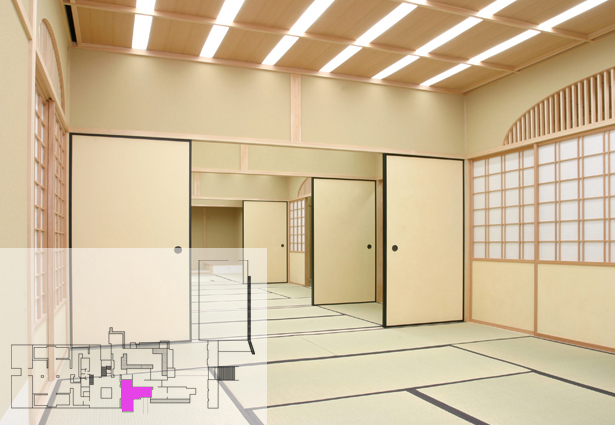2F
Historical and Cultural Zone
(1) Encounters with the West: Nanban Trade and Christianity
This room explores the roots of modern Nagasaki’s history and culture, starting with the flourishing of Nanban culture and the spread of Christianity following the opening of the port of Nagasaki, the shuinsen trade, and the construction of Dejima.
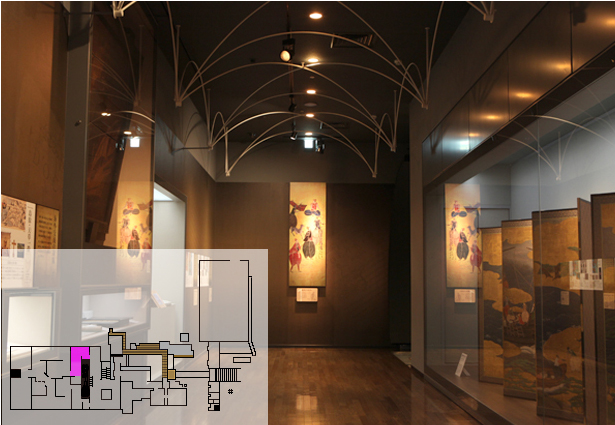
(2) Exchange with Korea: Korean Embassies and Tsushima
This room is dedicated to the exchanges that occurred between Japan and Korea with the intermediary of the Tsushima domain, and introduces the Korean embassies to Japan and Amenomori Hōshū, a Confucian scholar who played a significant role in Japanese-Korean relations.
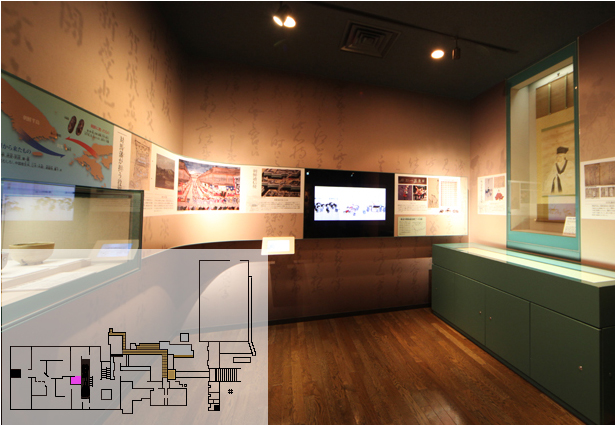
(3) Nagasaki Trade: Chinese and Dutch Ships and the Circulation of Goods
This room presents the various goods that were imported to Nagasaki by Chinese and Dutch ships, as well as those exported overseas through Dejima.
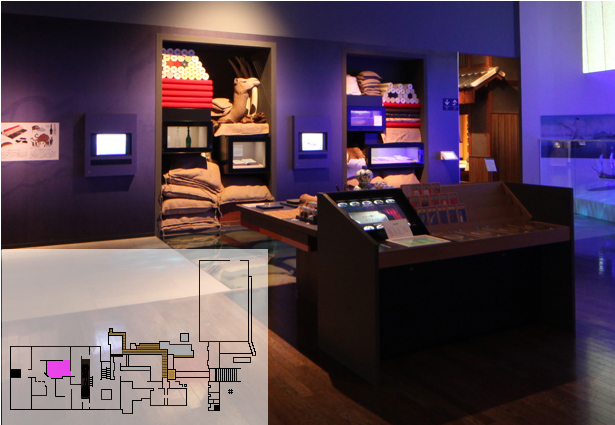
(b) [Video Corner] Biographies from the History of Nagasaki’s Overseas Exchange
The history and culture of Nagasaki are presented in an easy-to-understand manner through episodes from the lives of prominent historical figures, on a 150-inch large multiscreen .
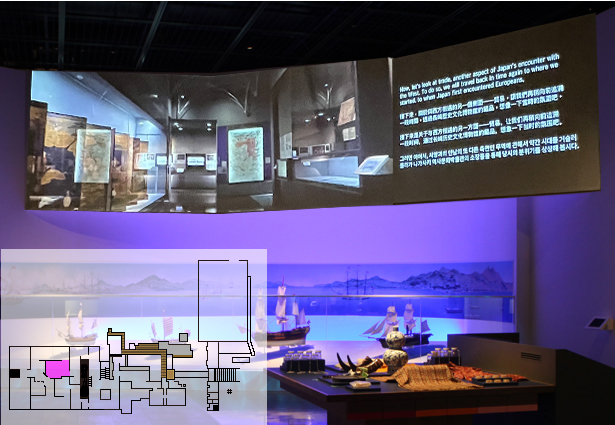
(4) Exchange with China: Chinese Temples and the Chinese Quarter
Through Mazu, the tutelary deity of seafarers, and a miniature model of the Chinese Quarter, this room highlights the artistic and cultural influences brought by trade with China during the Edo period.
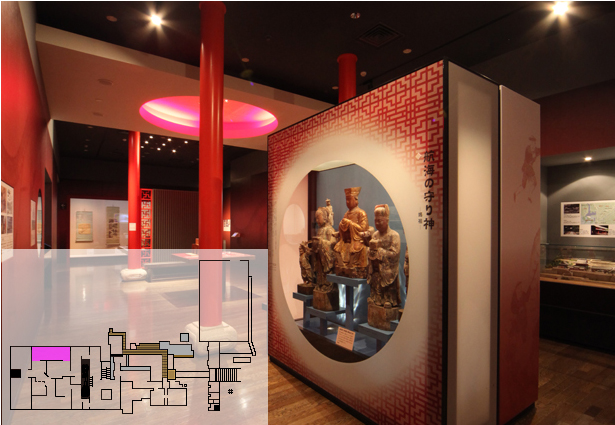
(5) Life in Nagasaki: Nagasaki’s Prosperity and the City Structure
Nagasaki has fostered a unique history and culture as a trading city. This room introduces the Nagasaki Kunchi, a festival that still continues to this day, and the structure of the city through original historical materials and a reconstructed house.
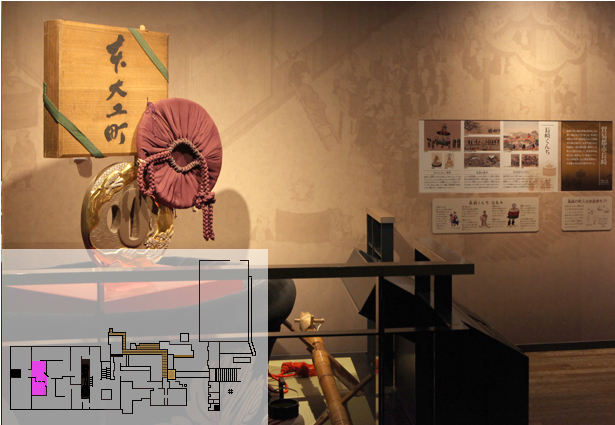
(5) Machiya (Merchant’s House)
The Machiya corner reconstructs a merchant house that stood in Nagasaki in the Edo period. Here, traditional decorations and dishes are recreated and displayed in accordance with seasonal events such as Tanabata, Obon, the Kunchi festival, and New Year’s. A series of pictures depicting annual events by Nagasaki artist Kawahara Keiga serve as reference.
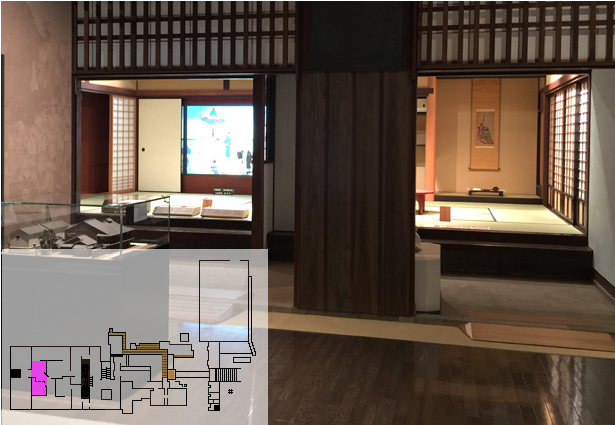
(6) Nagasaki’s Arts and Crafts: Exoticism Brought About by Cultural Exchange
Thematic Exhibition Room
This room is home to mini temporary exhibitions featuring works from our collection and centered around a variety of themes related to Nagasaki’s history and culture.
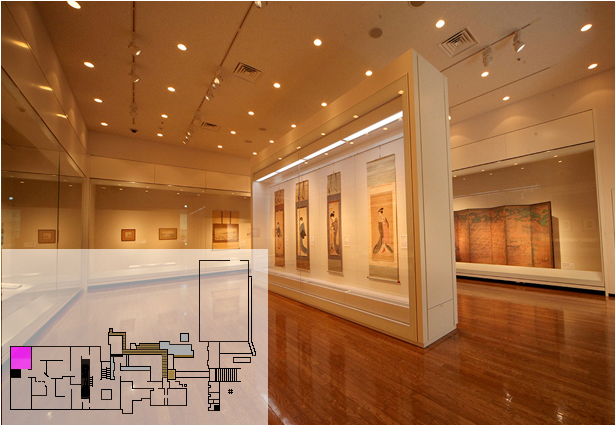
Crafts Exhibition Room
This room displays Nagasaki’s traditional crafts, which are known for their exotic style, including representative Nagasaki ceramics, Nanban lacquerware, mother-of-pearl inlaid objects, Nagasaki glass, tortoiseshell work, and metalwork.
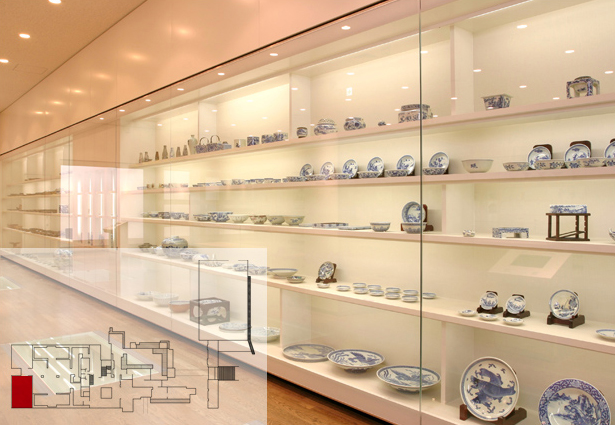
(7) Exchange with the Netherlands: Dejima and Dutch studies
This room presents the contributions of the heads of the Dutch trading post of Dejima, Philipp Franz von Siebold, and the Dutch interpreters, starting with the introduction of Western knowledge (known as “Dutch studies”) through Dejima, the only window of exchange with Europe during the Edo period.
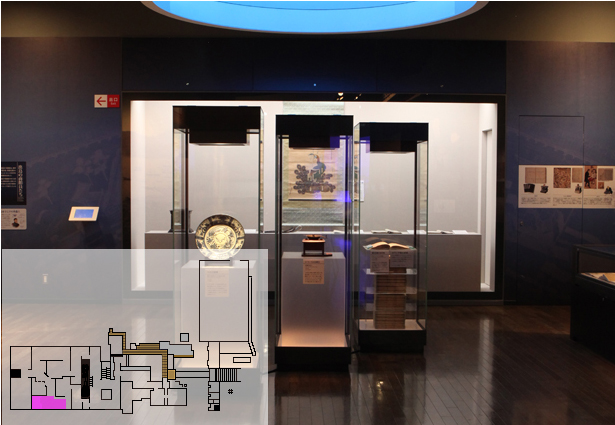
(8) The Forerunner of Modernization, Nagasaki: Western Knowledge and Technology, Spreading from Nagasaki
In the last years of the Edo period and at the beginning of the Meiji era, Nagasaki was the forerunner of Japan’s modernization. Visitors can experience the charm of modern Nagasaki, where people, goods, and information gathered, through original historical materials and hands-on exhibits.
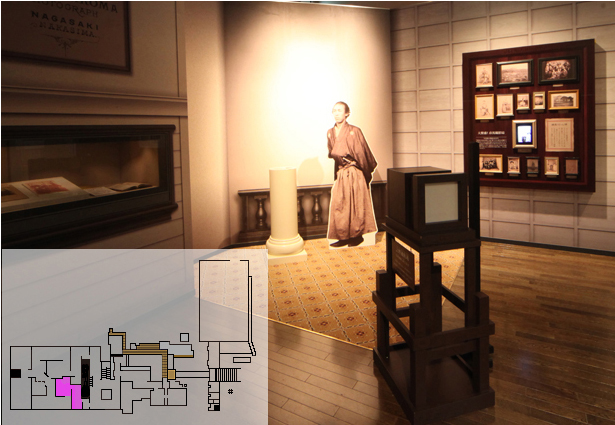
The Japanese Government of Nagasaki Zone
(0) Shoe Lockers
Visitors are invited to remove their shoes ad store them in the shoe lockers before entering the Japanese Government of Nagasaki Zone.
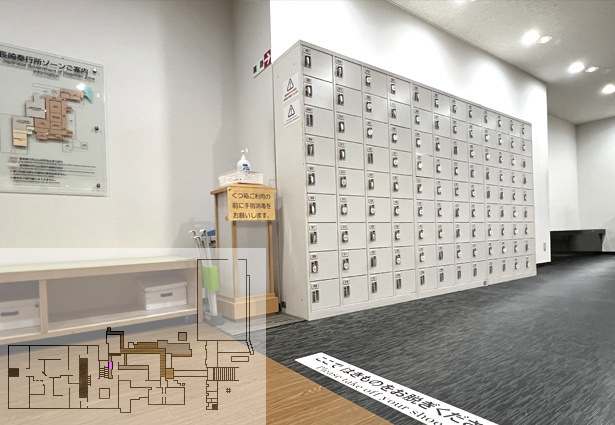
(A) Exhibition Room Related to the Nagasaki Magistrate’s Office
The establishment and evolution of the Nagasaki Magistrate’s Office are presented through maps and excavated artifacts. Visitors can learn about the duties of the Nagasaki magistrate, the collection of judicial decisions by the Nagasaki Magistrate’s Office called the “Hankachō”, and the 127 generations of Nagasaki magistrates.
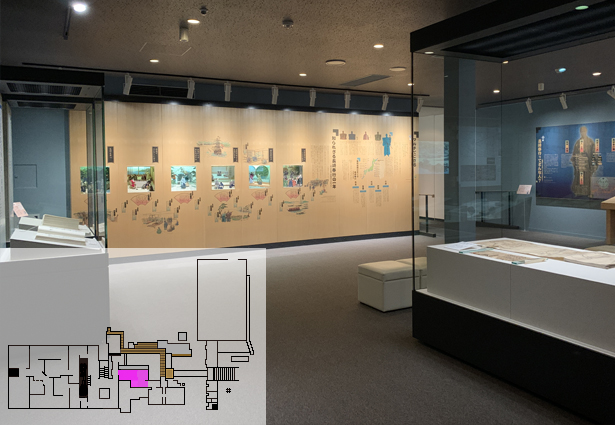
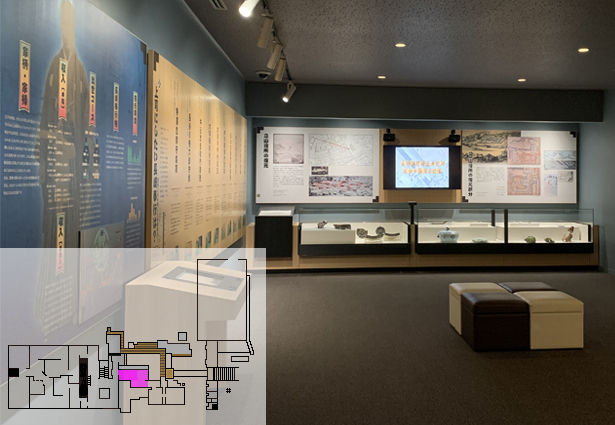
(B) Christian-related Exhibits
One of the responsibilities of the Nagasaki magistrate was the eradication of Christianity. Here, visitors can view the fumie, Christian images to be stepped on which were used to uncover hidden Christians, rosaries confiscated from believers, and other items formerly kept in the Shūmon-gura, or storehouse for religious goods, of the Nagasaki Magistrate’s Office (now in the collection of the Tokyo National Museum).
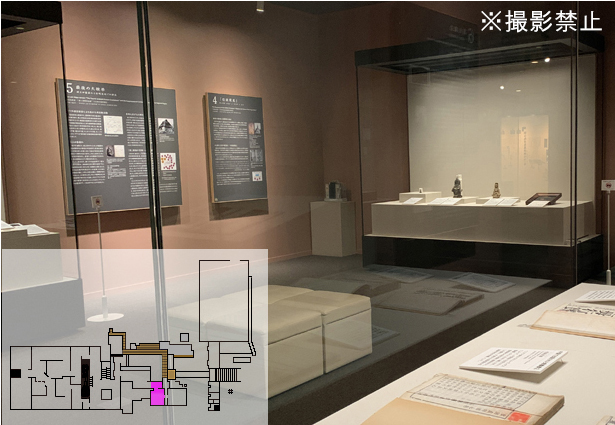
(C): Nagasaki Magistrate’s Office Theater
The videos introduce unique aspects of Nagasaki history, including the history of the Nagasaki Magistrate’s Office and of Christianity, and the sites of Japan’s Meiji Industrial Revolution.
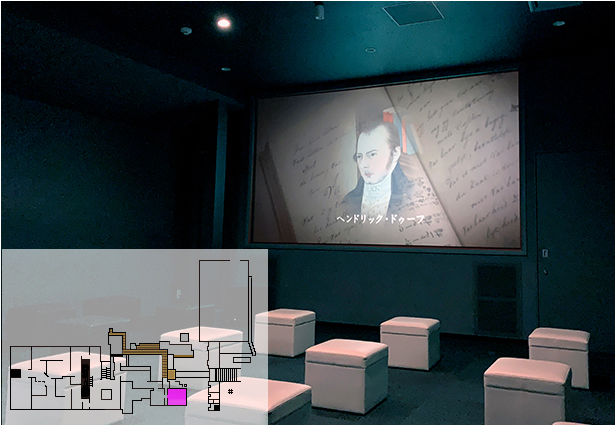
(D) Taimensho, Tsugi-no-ma, Shisha-no-ma
These rooms were used for audiences with the director of the Dutch trading post of Dejima and other foreigners, but also for the “Ōaratame”, the inspection of trade goods carried out by the Nagasaki magistrate.
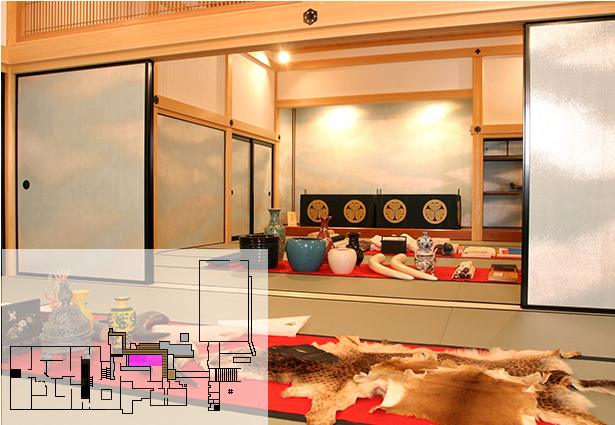
(E) Oshirasu
The place where the Nagasaki magistrate held trials. Almost every detail has been reconstructed, on the basis of maps from the Edo period, including the gravel outside the veranda.
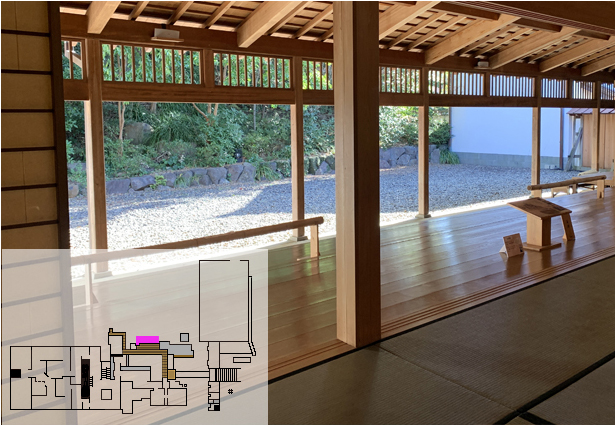
(F) Shoin, Shoin Tsugi-no-ma
This was the reception room of the Nagasaki magistrate, where he received important guests such as domain lords. The traditional Japanese toilet on the veranda has been carefully reconstructed.
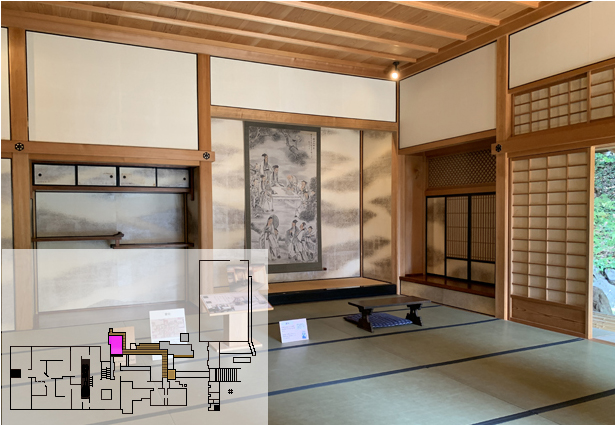
(G) Toshiyori Office
The office of the machidoshiyori (town elders), high officials who assisted the Nagasaki magistrate in his work (administration, justice, trade, etc.). As Nagasaki town officials, they carried out practical tasks connected with the administration of the city, diplomacy, and trade.
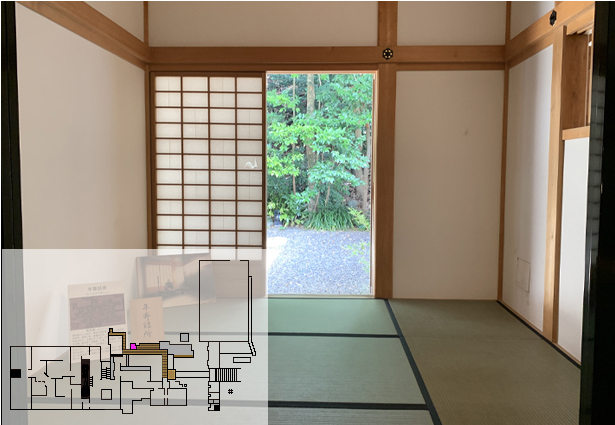
(H) Shomonjo, Shomonjo Tsugi-no-ma
In the Magistrate’s Office, officials kept journals, and compiled reports from the city districts and decrees from the magistrate.
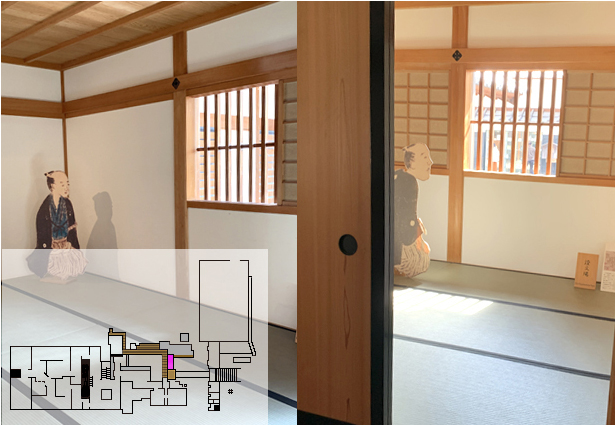
(I) Entrance
The front entrance was used when the magistrate arrived in Nagasaki or departed for Edo, and when domain lords or the director of the Dutch trading post came to visit. When a new magistrate arrived to take up office, the entrance and guardhouse were decorated with weapons.
*Visitors cannot enter from here.
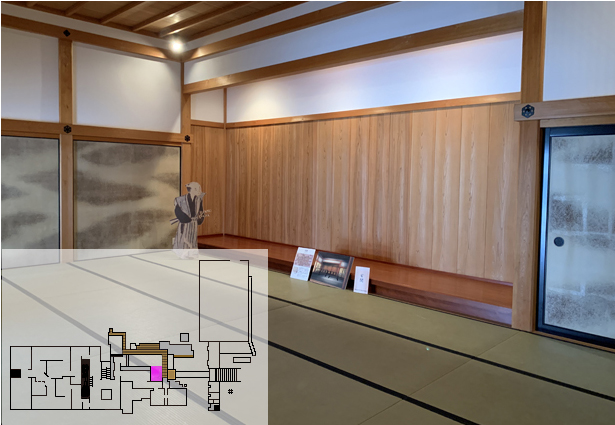
(J) Shikidai
A wide wooden step located in the entryway.
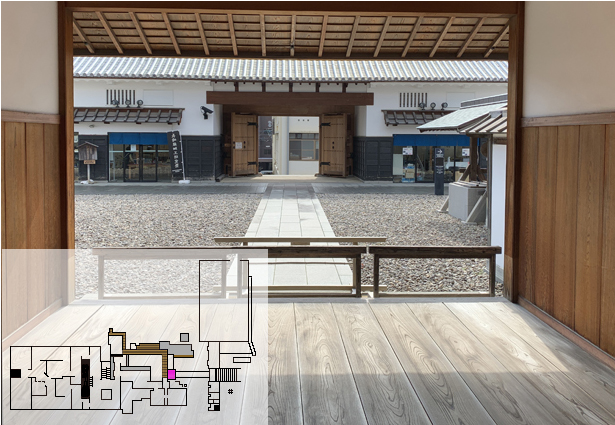
(K) Courtyard, Event Square
Various events take place in the Event Square, such as the Museum’s summer festival and the “Niwasakimawari” performances of the Nagasaki Kunchi.
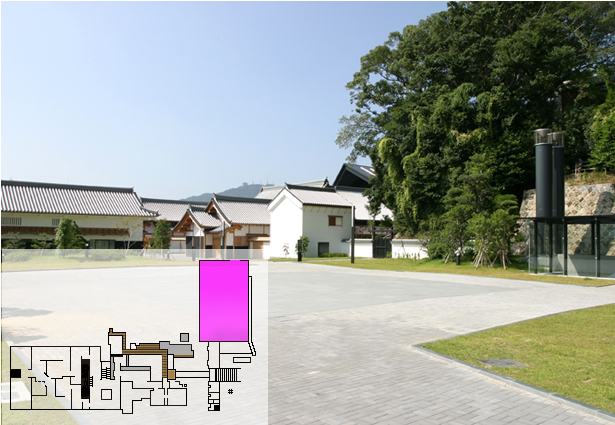
(L) Museum Restaurant Ginrei
A long-established Western-style restaurant that relocated inside the premises when the Museum opened. Nagasaki’s specialty Toruko rice and other traditional dishes are served in a setting decorated with antiques and paintings.
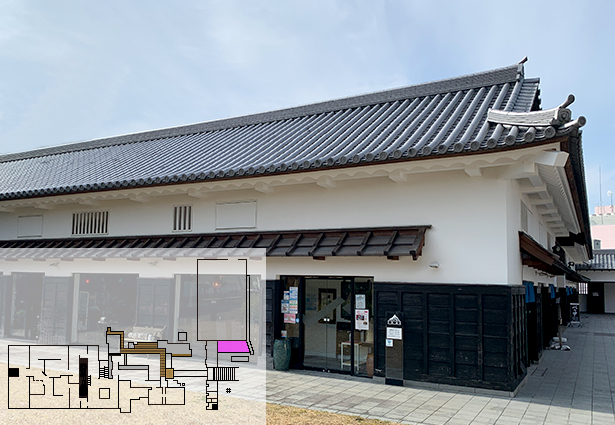
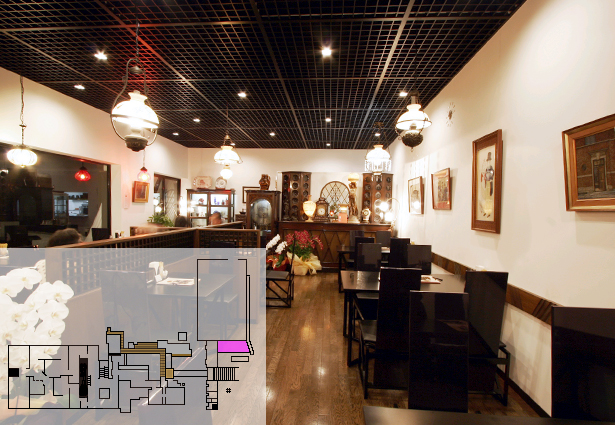
(M) Traditional Craft Workshops
Volunteers from five groups that took part in the Nagasaki City Traditional Crafts Human Resources Development Project assist visitors in the production of handicrafts. The workshops available differ every day. Reservation required.
[Nagasaki silverwork, ceramics (Utsutsugawa ware), Nagasaki dyeing, stained glass, Nagasaki embroidery]
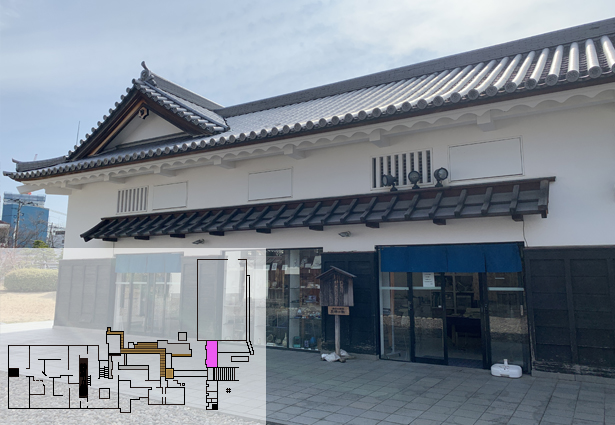
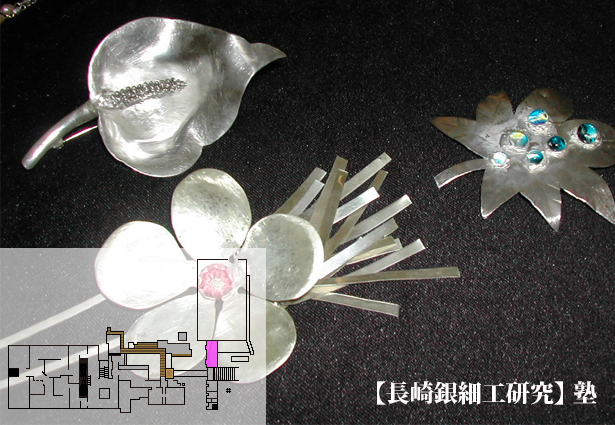
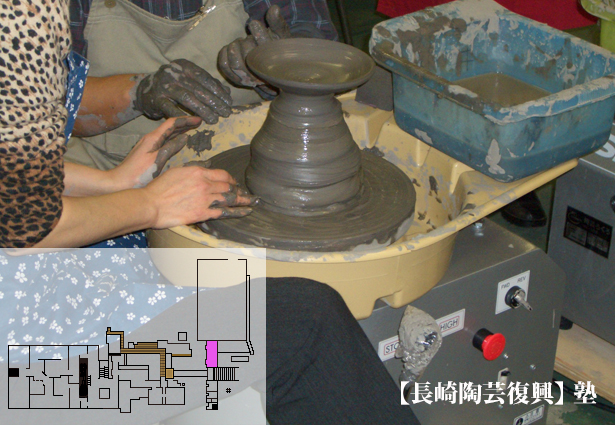
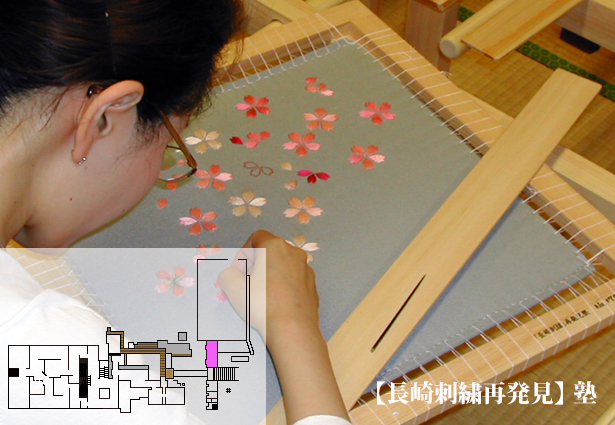
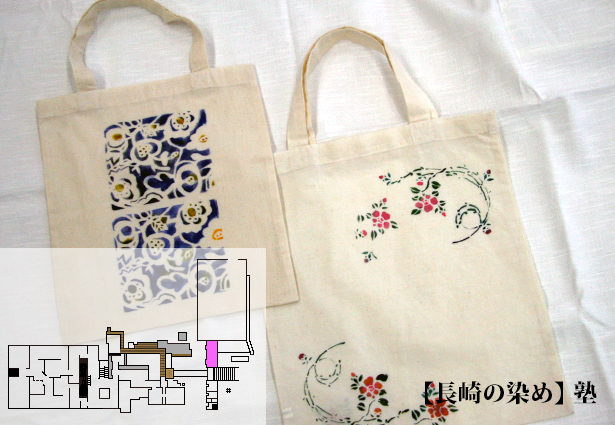

(N) Front Gate
The Nagasaki Magistrate’s Tateyama Office has been reconstructed in its original location, using as reference the document “Drawings of Public Offices in Nagasaki” (1808), among other existing maps, and excavated relics.
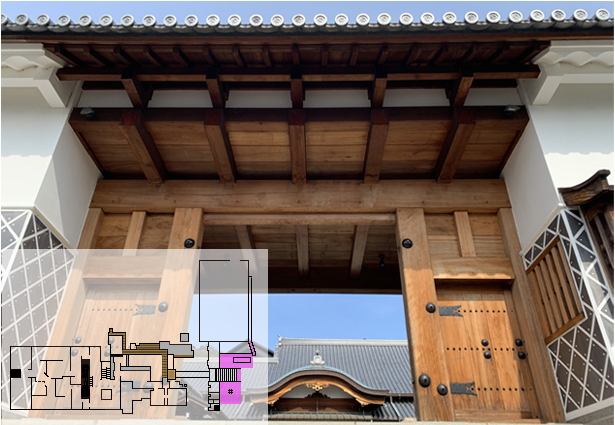
(Q) Front Stairs
(R) Well
The stone walls, steps, and paving use original remains discovered at the site. The top of the stone staircase has been newly built. The water tank for fire protection, the top curb of the drain and the small masonry below it have been rebuilt anew, but the large masonry underneath is original. Part of the well uses original elements that were unearthed elsewhere on the site.
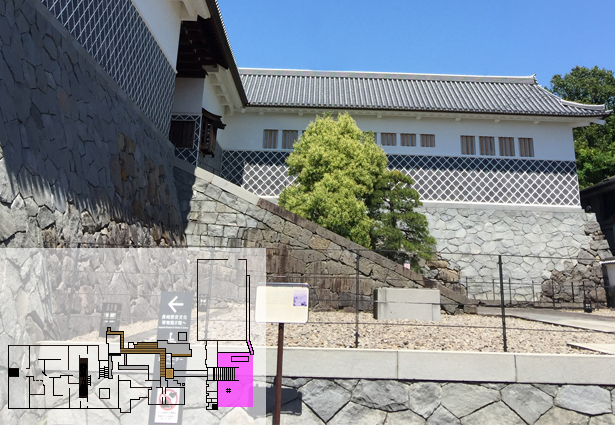
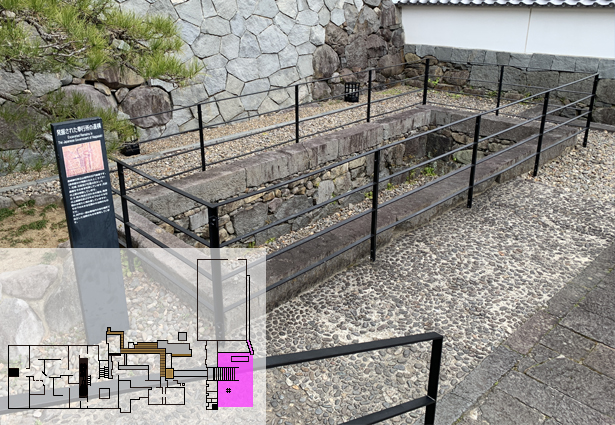
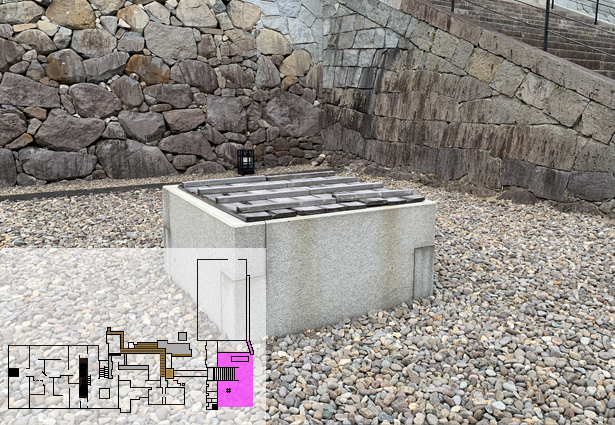
(O) Tortoiseshell Craft / Sasebo Spinning Tops (Rental Workshops)
Visitors can observe the manufacturing process of Nagasaki’s tortoiseshell craft and purchase items made here (except on Wednesdays).
Every Wednesday, visitors can try painting their own Sasebo spinning top, a traditional toy from Sasebo City, in Nagasaki Prefecture.
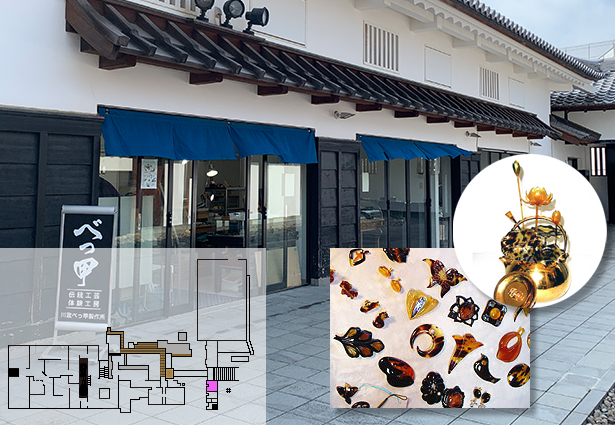
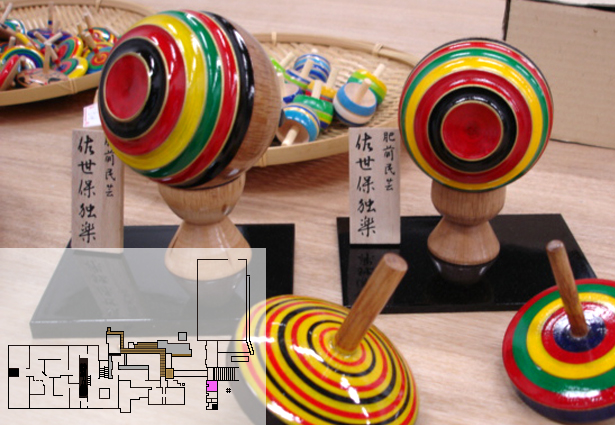
(P) Ceramics Hana to Kaze (Rental Workshop)
A Nagasaki-born master potter and ceramic painter make, display, and sell original works. It’s also possible to place custom orders and take part in handbuilding experiences (advance registration required).
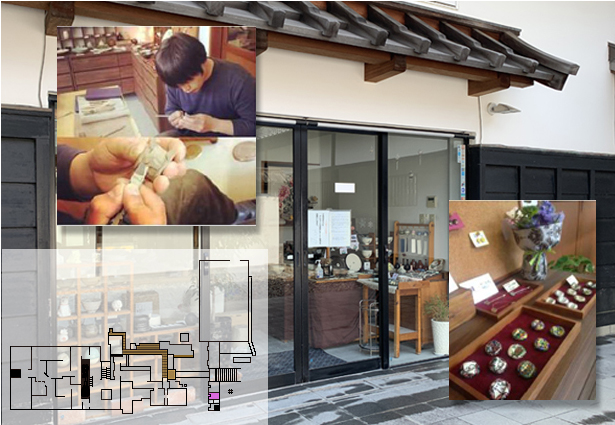
(Z) Event room Ryūzantei
With an authentic tea room and a 30 tatami-mat Japanese-style room, this space can be used for Japanese cultural activities such as tea ceremony, flower arrangement, kimono dressing, calligraphy, and so on.
